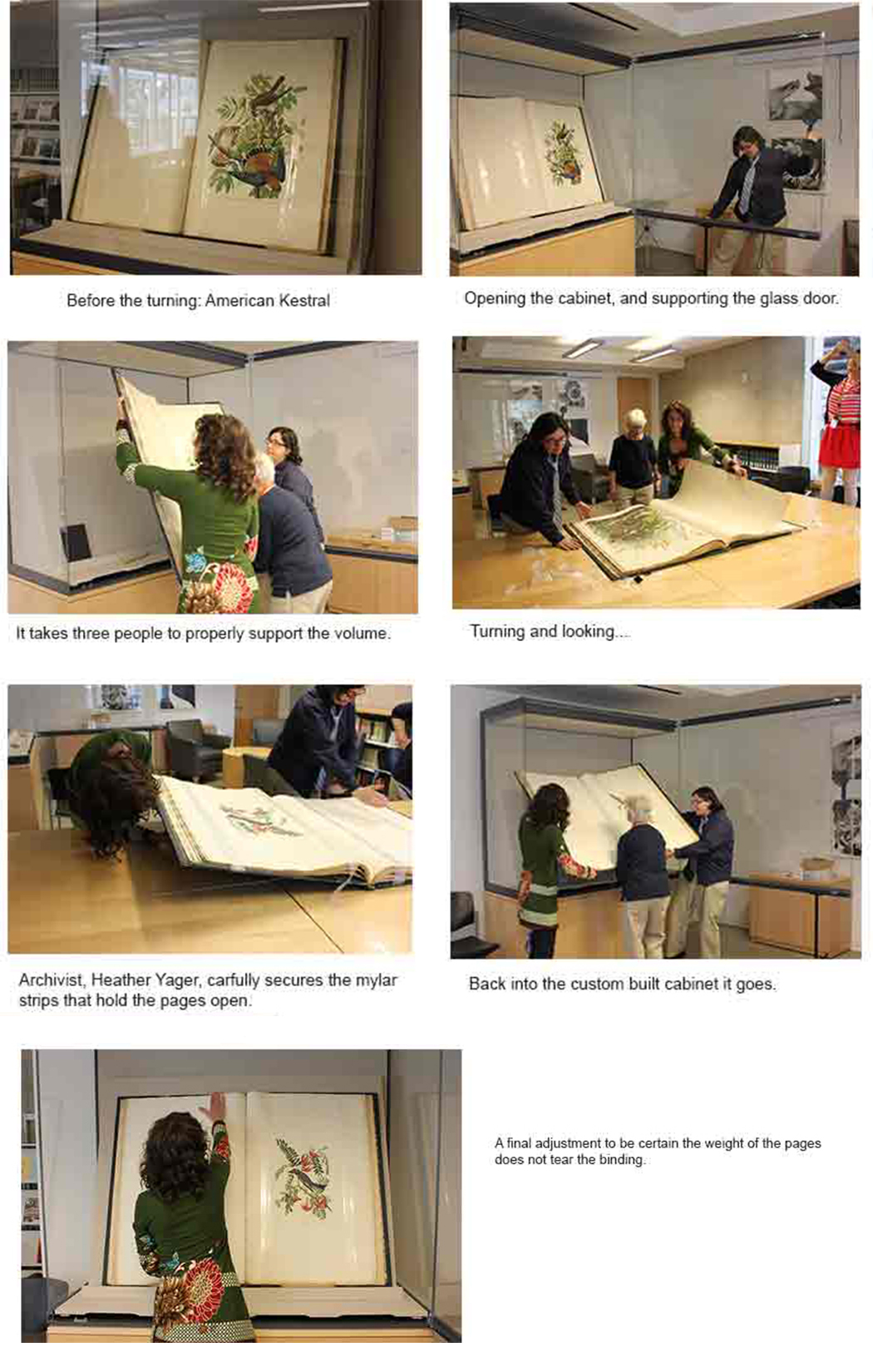Today marked our semi-annual page turning of the Audubon Double-Elephant portfolio on display in the library reading room. Cameras were on hand to record this momentous occasion.
You may have noticed that we are not wearing gloves during this procedure. While we use white cotton gloves for handling photographs and negatives, cotton can snag, tear, or abrade fragile paper, and the looseness of the gloves makes it difficult to get a secure grip on the text block. However, we thoroughly wash all surfaces (including our hands!) before beginning. If you would like more information, feel free to read "Misconceptions about White Gloves" from the December 2005 International Federation of Library Associations Newsletter (http://archive.ifla.org/VI/4/news/ipnn37.pdf) or email the library and we'll put you in touch with our rare books librarian (library [at] calacademy [dot] org) who will happily explain the handling policies for rare book materials.
For all of his prowess as an artist and fundraiser, Audubon had his faults. Reading through his writings it is clear to me that he either trusted people not at all, or far too much. The Pirpiry Flycatcher plate is one good example of this. In his description of obtaining specimens (Ornithological biography, v.2.), Audubon mentions that the son of a friend told him this species were nesting in the College Yard in South Carolina, which he ignored completely, only to admit later they were noted to return every year for three years hence. In the same entry, he states he was told that the plant on which he depicted the bird was abundant in Cuba, so he believed it appropriate as a background. It may exist in Cuba and the Keyes, but it is native from Malaysia to North Australia.
 "Gray Tyrant" by John James Audubon. Birds of America: From Drawings Made in the United States and Their Territories (Octavo Ed. 1870). California Academy of Sciences Library, Rare Books QL674 .A9 1870.
"Gray Tyrant" by John James Audubon. Birds of America: From Drawings Made in the United States and Their Territories (Octavo Ed. 1870). California Academy of Sciences Library, Rare Books QL674 .A9 1870.
As new research is added and collected accounts synthesized, plants and animals change names. The species depicted in this plate not only have several common names, but their genus names have shifted as well.
Pirpiry Flycatcher/ Gray Tyrant/ Pitirre/ Gray Kingbird
Muscicapa dominicensis/ Tyrannus dominicensis
Hummingbird Tree/ Scarlet Wisteria/ Agati/ Bokful/ Heron Flower
Agati grandiflora/ Aeschynomene grandiflora/ Sesbania grandiflora
Our Double-Elephant Folio was the gift of Edward E. and Florence Hopkins Hills of San Francisco. The set survived the 1906 earthquake and fire in the hands of the San Francisco Art Association, who sold the work to Hills in 1941. The work came to the Academy in 1964.
